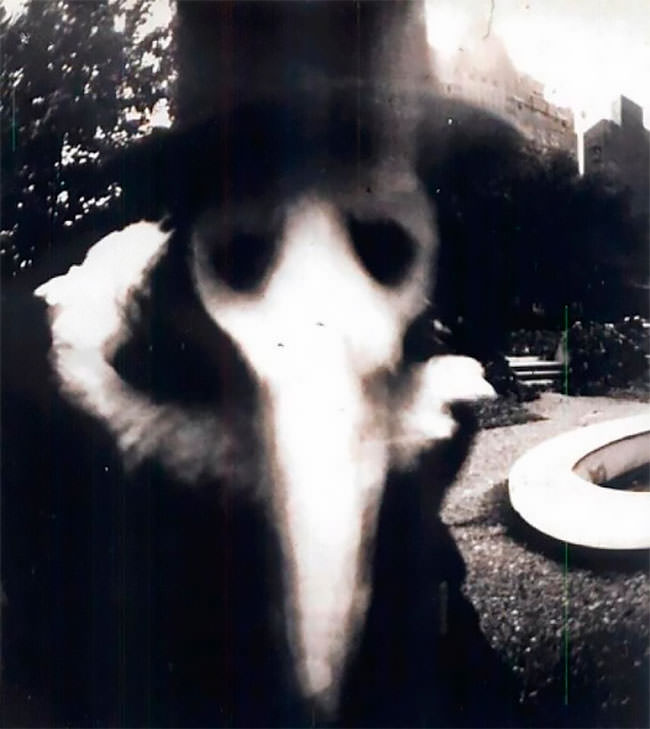The first Plague Doctor’s mask was designed in the 17th Century, and it has been preserved overtime at the German Museum of Medical History in Ingolstadt. There were two main theories regarding how diseases spread and were contracted in medieval Europe: The Four Humors and Miasma theories. The mask was originally designed to combat the Miasma theory. According to the theory, people become sick through breathing in “bad air,” so the wearers of this mask would put fragrant herbs into a long nose and light them on fire to prevent Miasma from being inhaled by “cleaning” the “bad air.”
A Plague Doctor, from Jean -Jacques Manget ‘Traite de la peste’ 172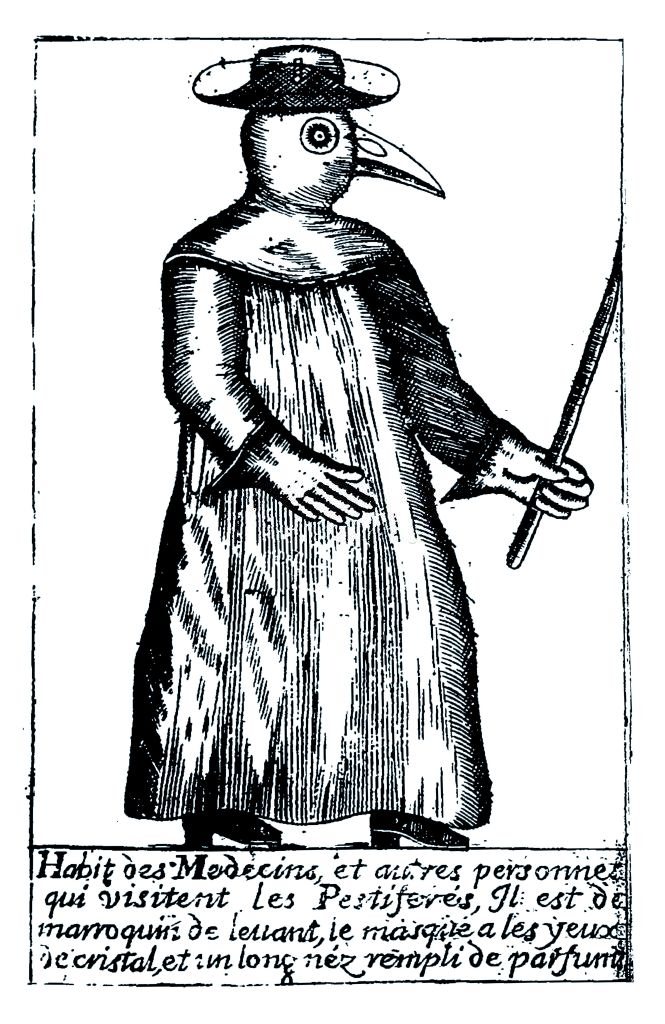
The mask was constructed with glass openings for the eyes and a curved beak shaped like a bird’s beak attached to straps that held the beak in position in front of the doctor’s nose. There were two small holes on the mask, and the mask was a type of breathing apparatus containing aromatic items. The beak could have dried flowers (such as carnations and roses), herbs (mint), spices, camphor, or vinegar sponges. People believed that bad smells, called miasmas, were the main cause of diseases in earlier times. This was later proved false by the germ theory. To prevent the Plague from infecting them, doctors believed the herbs would control the “evil” smell.
A plague doctor in protective clothing. The beak mask held spices thought to purify air, the wand was used to avoid touching patients, 1656.
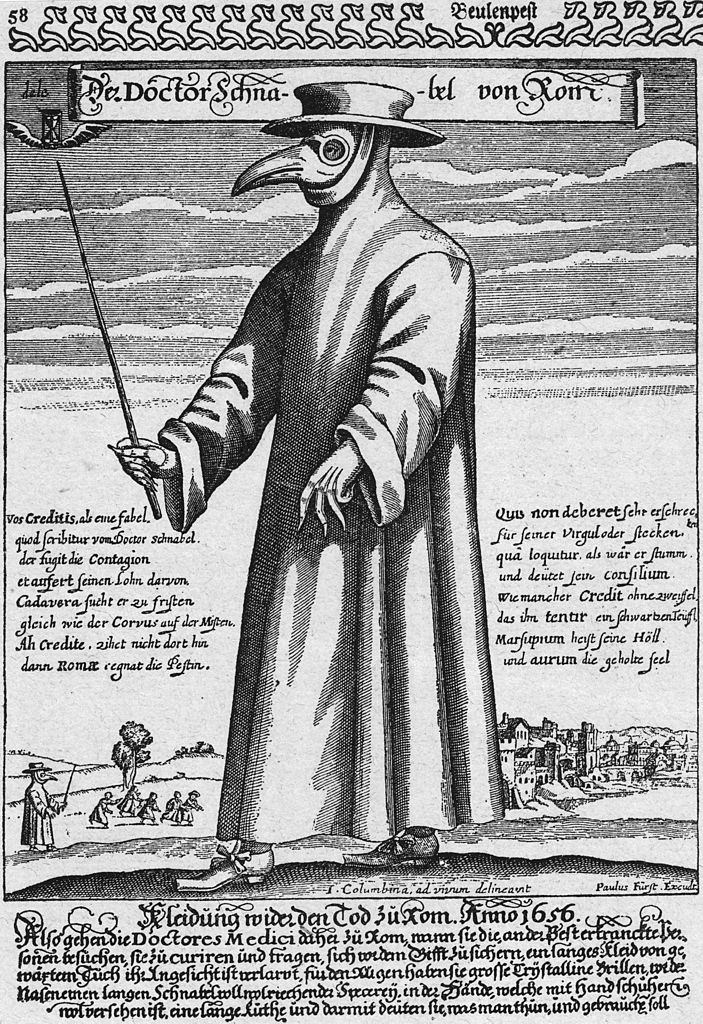
Plague doctors wore wide-brimmed leather hats with their costumes. To examine patients without touching them, they used wooden canes to point out problem areas. They were also used to keep people away, take the pulse of patients without touching them, and remove clothing from plague victims.
The plague doctor used to wear a waxed coat, a sort of protective goggles and gloves, the beak of their masks contained aromatic substances. Rome, 1656.
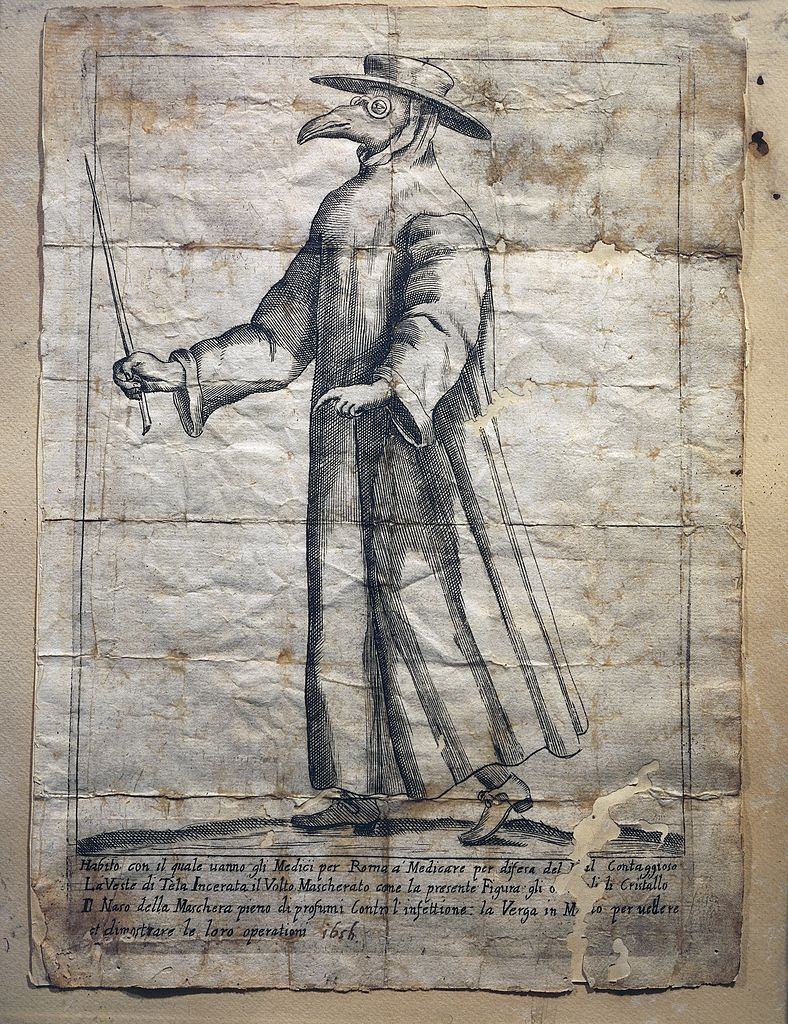
The “beak doctor” costume is thought to have been invented by Charles de Lorme, who adopted in 1619 the idea of a full-body protective garment modeled after a soldier’s armor. The costume consisted of a bird mask with spectacles and a long leather (Moroccan or Levantine) or waxed canvas gown. The overclothes, leggings, gloves, boots, and hat were waxed leather. Like the beak mask, this garment was impregnated with fragrant stuff.
The first Plague Doctor’s from the 17th century at the German Museum of Medical History in Ingolstadt.
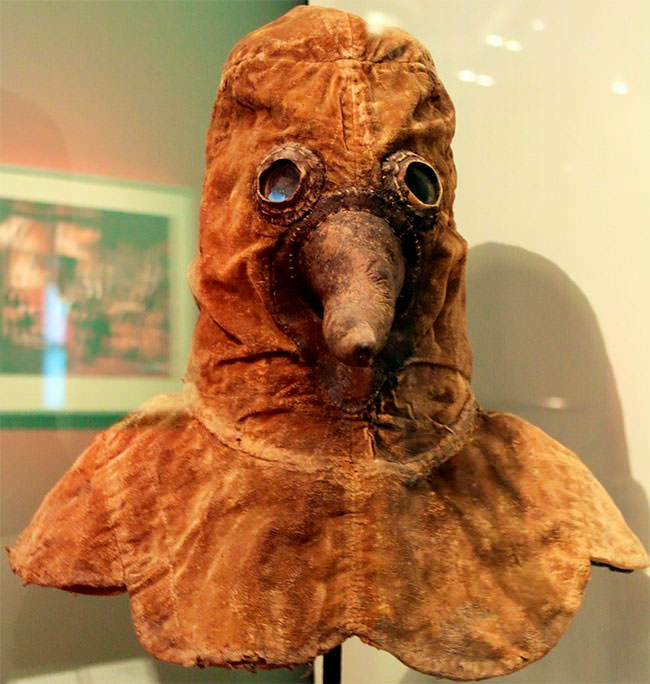
Even though the mask had two holes, one on each side near the nostrils, Lorme wrote that it could suffice to breathe while carrying the impression of the drugs contained in the removable beak with one’s breath.
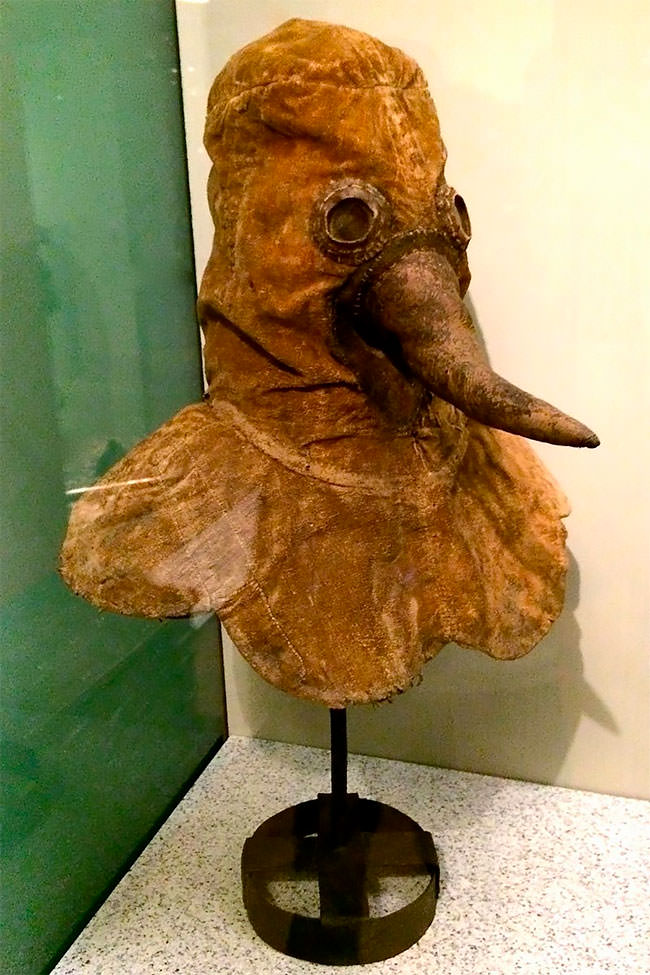
Jean-Jacques Manget describes the costume worn by plague doctors in Nijmegen in 1636-1637 in his 1721 treatise Treatise on the Plague. Manget’s 1721 work features this costume as its frontispiece. Nijmegen plague doctors also wore beaked masks. They wore morocco leather on their robes, leggings, hats, and gloves.
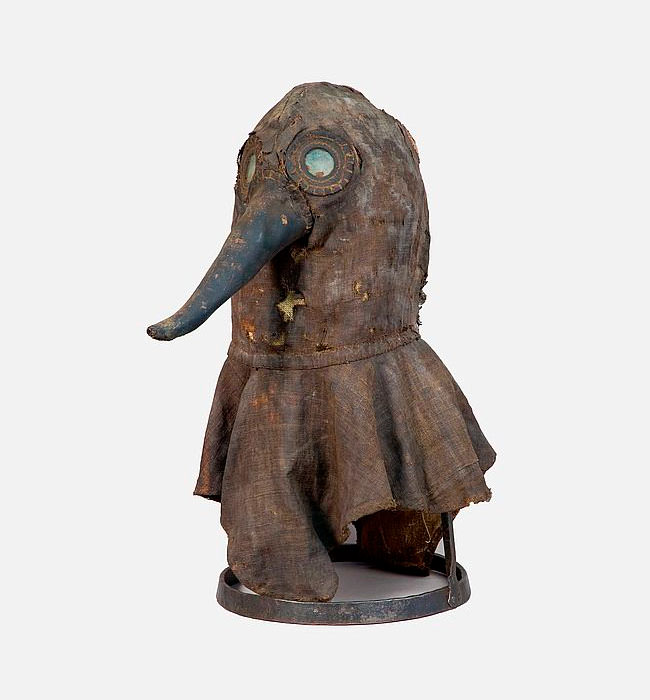
Plague doctors wore this costume during the Plague of 1656, which killed 145,000 people in Rome and 300,000 in Naples. People were scared of the outfit because seeing it was a sign of death. These protective costumes were worn by plague doctors when they treated plague patients.
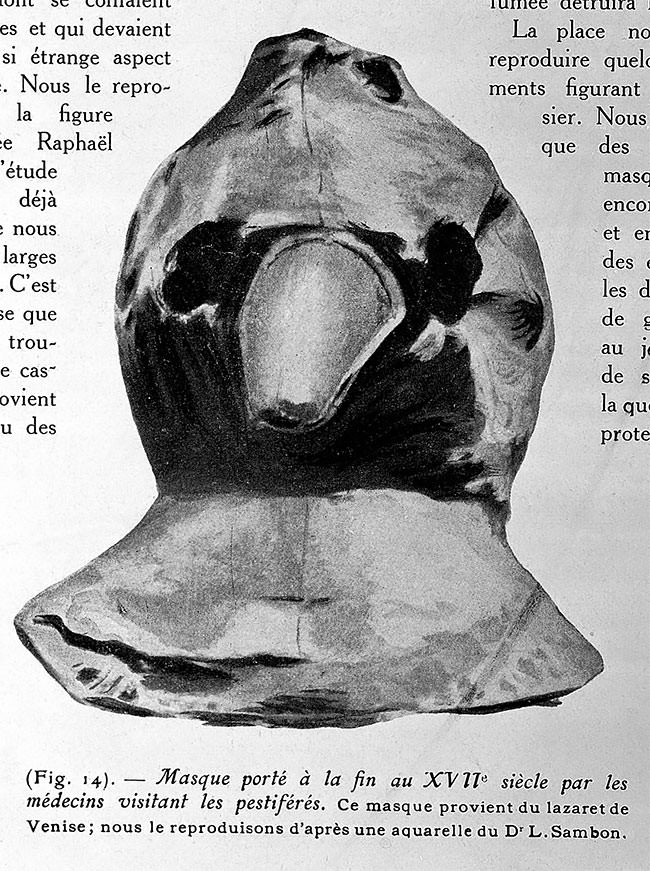
One of the most enigmatic figures to come out of the Middle Ages is the plague doctor. European doctors specialized in treating plague victims, and the Black Death is the most famous example. During plagues, towns, villages, or cities hired plague doctors.
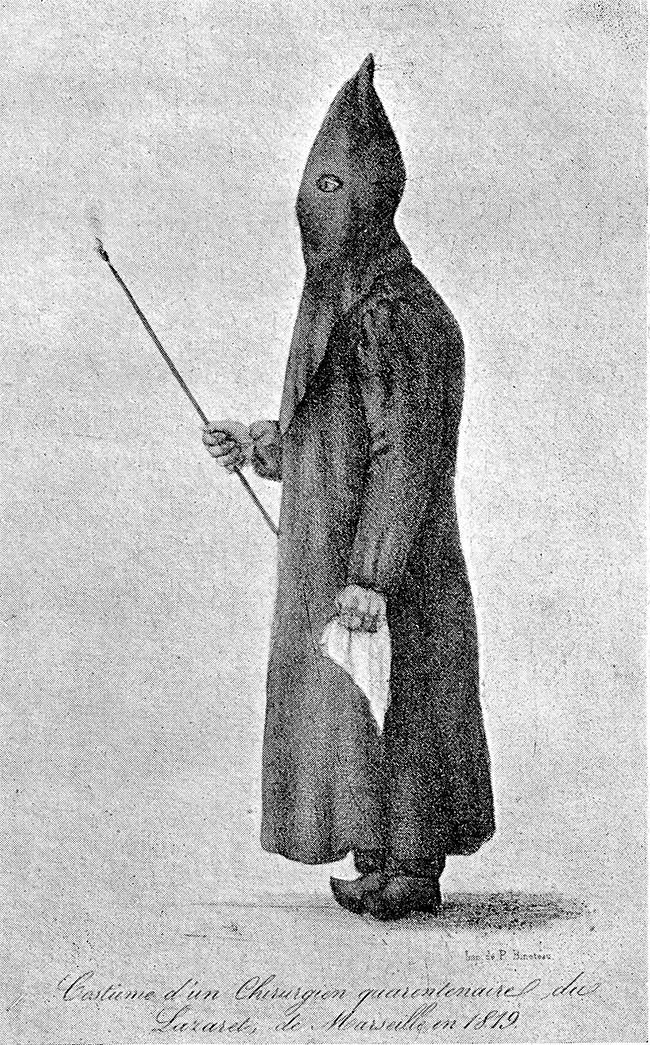
Plague doctors’ primary duties were to treat and cure plague victims and to bury the dead. In addition to recording the number of casualties in logbooks, doctors were responsible for documenting the last wishes of their patients. Moreover, they were often called to testify and witness wills. This aspect of plague doctors’ jobs seemed to occupy the most of the time. Plague doctors even performed autopsies from time to time as part of their research into treating the disease.
